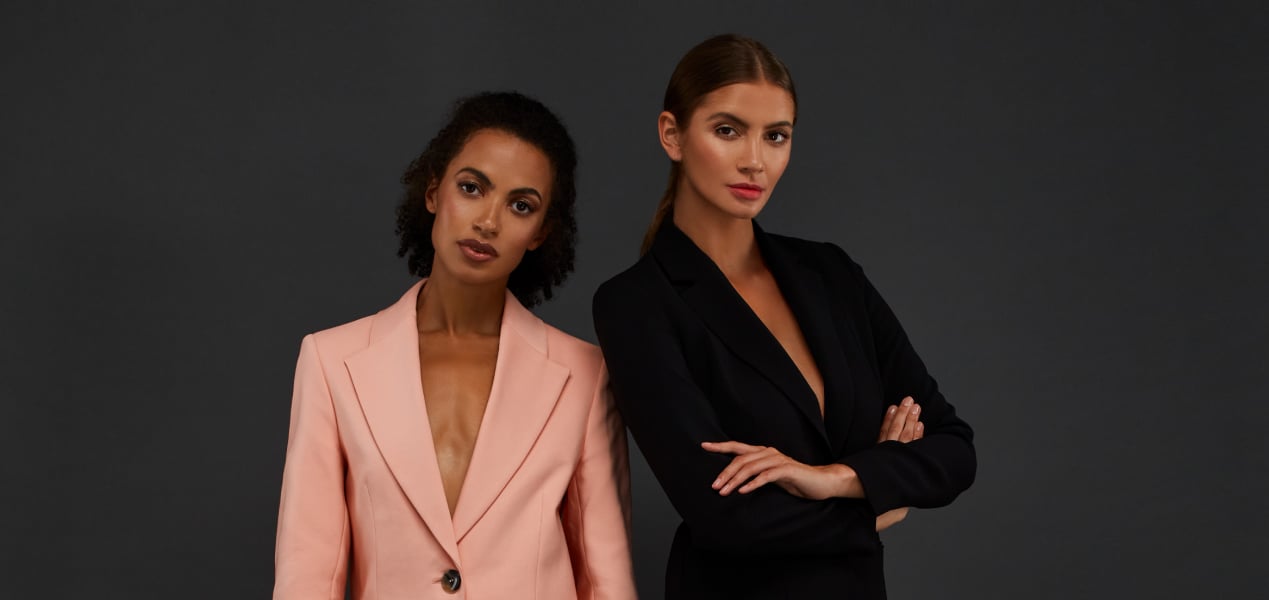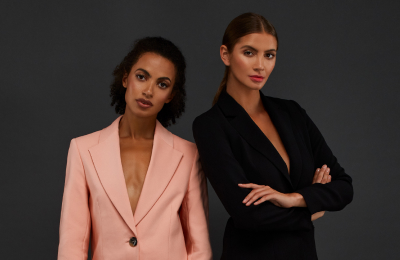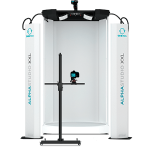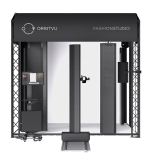What is a fashion lookbook, and why do you need one?
What is a lookbook? A photography lookbook is an absolute must-have for a fashion brand. A fashion lookbook showcases the new collection and reflects the brand's identity. Creating a lookbook is an opportunity to unleash your creativity and stand out from other fashion designers. An alluring cover page, carefully curated images, a well-thought layout, a color code, and a communication style are all important aspects of the brand's visual identity.
For example, the below pictures illustrate the collaboration between Gucci and Adidas. The high-end bold editorial style typical for the high fashion brand fuses perfectly with the athleisure dynamics of Adidas. As a result, the photos feature the characteristics of both brands and are easily recognizable to the viewer.

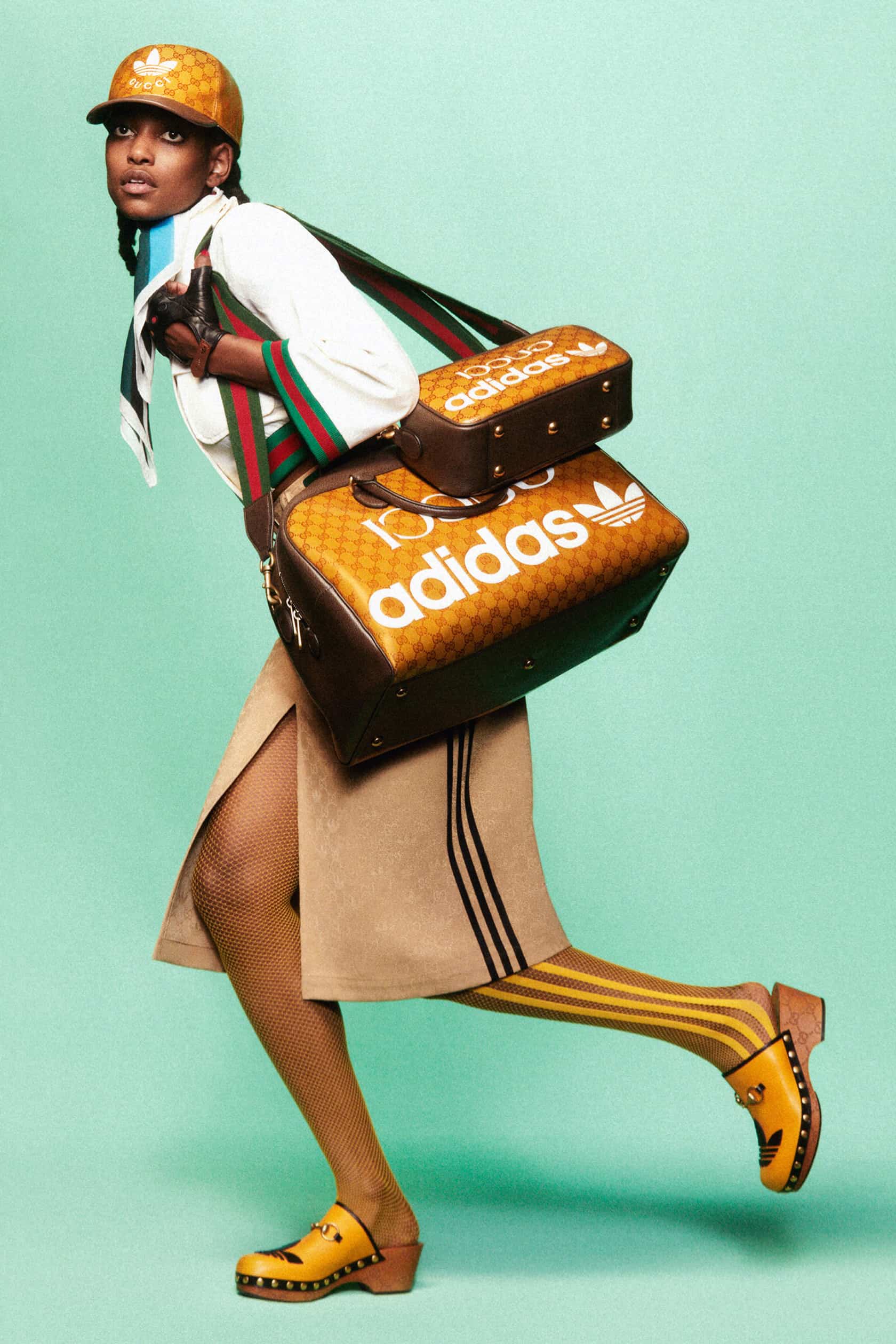
What is a fashion lookbook, and why do you need one?
A fashion lookbook is a great tool for marketing your brand's collection. Nowadays, a lookbook is not just a traditional fashion catalog! It is merely a framework for your creativity and distinctive communication style. Although you can use one of the lookbook templates available online, feel free to adapt them to better reflect your own brand.
Making a lookbook design takes much more than a set of product photos. Think of it as an investment. The high-quality images can be adapted and utilized in various forms - from traditional hard copy, email marketing campaigns, and online lookbooks to images for your online store. Also, the lookbook images can be uploaded as social media content. Considering the polyvalence of lookbook photos, the initial cost of hiring a professional photographer and organizing the photo shoot will quickly pay off!
Before diving into creating your first fashion lookbook design, take some time to think it through. A fashion lookbook should be adapted to the buyer persona and fit their needs and aspirations. Carefully plan the outfits, mix and match the items within the collection to inspire the potential customer. Remember that your goal is to create a lasting impression.
|
The benefits of creating a fashion lookbook
Given the flexibility of this form, creating a lookbook remains quite accessible. Depending on your budget, you can opt for a photo shoot in a professional studio, in nature, or a remote exotic location. Distribution-wise, choosing a digital format over traditional print is also a more economical solution.
However, hiring a professional photographer with experience in the fashion industry is worth the splurge! The same goes for professional models and skillful make-up artists. They will ensure the editorial allure of your photos, which is so desirable for a fashion lookbook. Furthermore, this investment can only elevate the marketing value of the images.

A digital lookbook comes with endless creative possibilities. Feel free to complete images with music and backstage videos. A digital lookbook is quite a polyvalent tool! In addition to generating sales via e-commerce, use it to increase engagement in social media.
A lookbook can convey the ideas and values behind your brand through creative storytelling. Reflecting buyers' aspirations, needs, and aesthetics can implement a sense of community, which lays a foundation for customer loyalty.
Ready to create a digital lookbook? Let us walk you through the whole process of how to make a lookbook!
Step-by-step guide on how to create a lookbook
Step one: Research and planning
Strategy is the key to success - designing a lookbook
Even if you feel tempted to go straight into the action, consider the importance of this stage. Take your time and carefully reflect on the following points:
Create a Customer Persona
Who will wear your clothes? Imagine the potential customers of your brand - who are they? What are their aspirations? How do they want to be perceived?
Setting a customer persona is crucial as it will define the communication style used in the lookbook. The images, language employed for copywriting, and even the distribution form should be adapted to resonate with your target group. At first glance, the reader should understand what group your collection is intended for.
How will you use it? Traditional lookbooks vs. digital lookbooks
What do you need the lookbook for exactly? Will it be sent out via email campaigns in pdf format? Or published on your brand's social media or website? Is the online format enough, or do you need prints for upcoming events, showrooms, or pop-up stores?
All of the above should be considered while designing the lookbook template. Contrary to digital format, printed catalogs often feature images set side-by-side. In this case, planning the photoshoot around a theme or telling a story through the images will smoothen the transition between the pages and encourage potential customers to keep reading. The thread, or the storyline, differentiates a lookbook from a line sheet.
The H&M lookbook featured below is a great example of a fashion online lookbook organized by theme. The collection is divided into three sections. Each group of photos is centered around one of the following themes/keywords - smart, street, and casual.
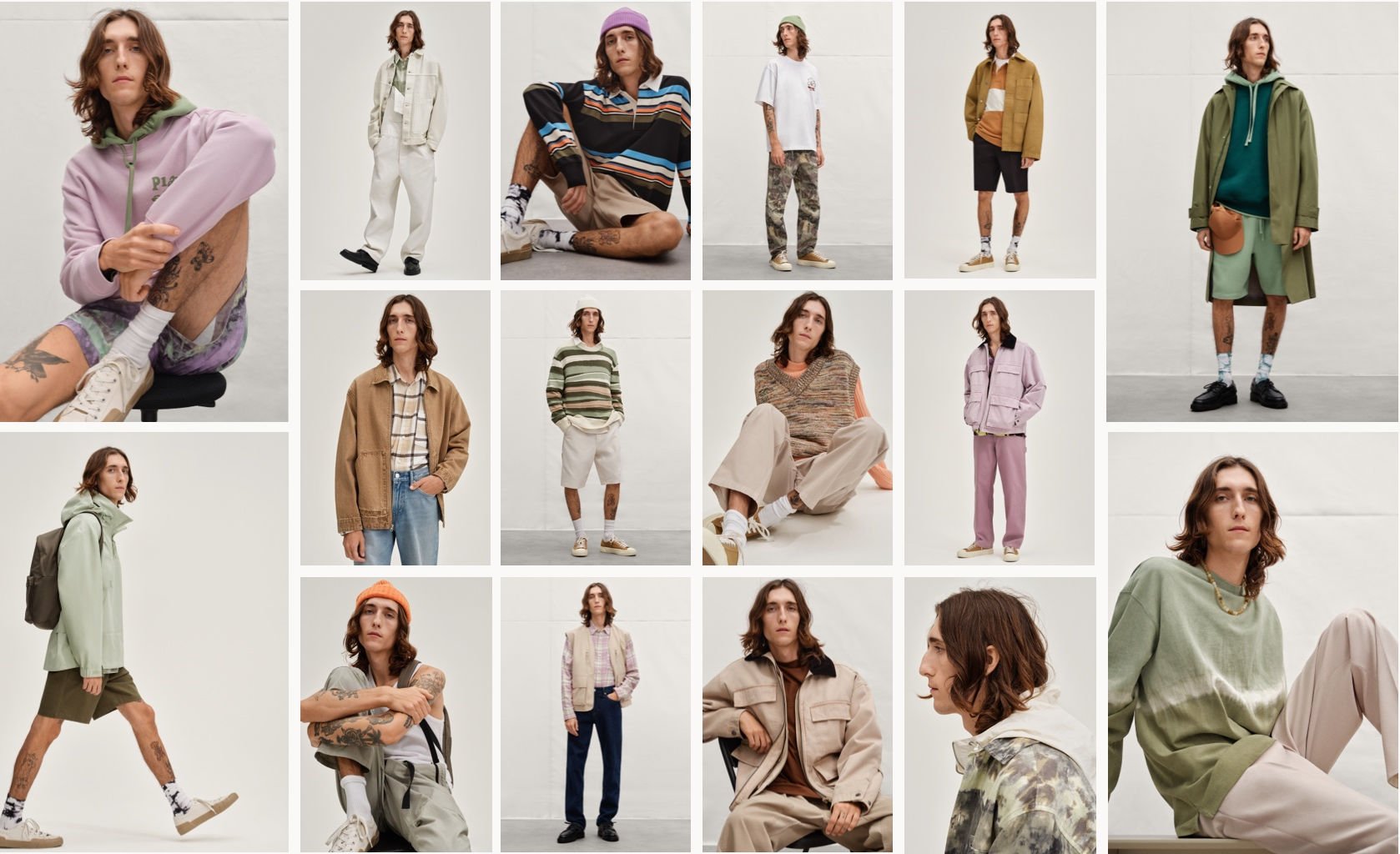
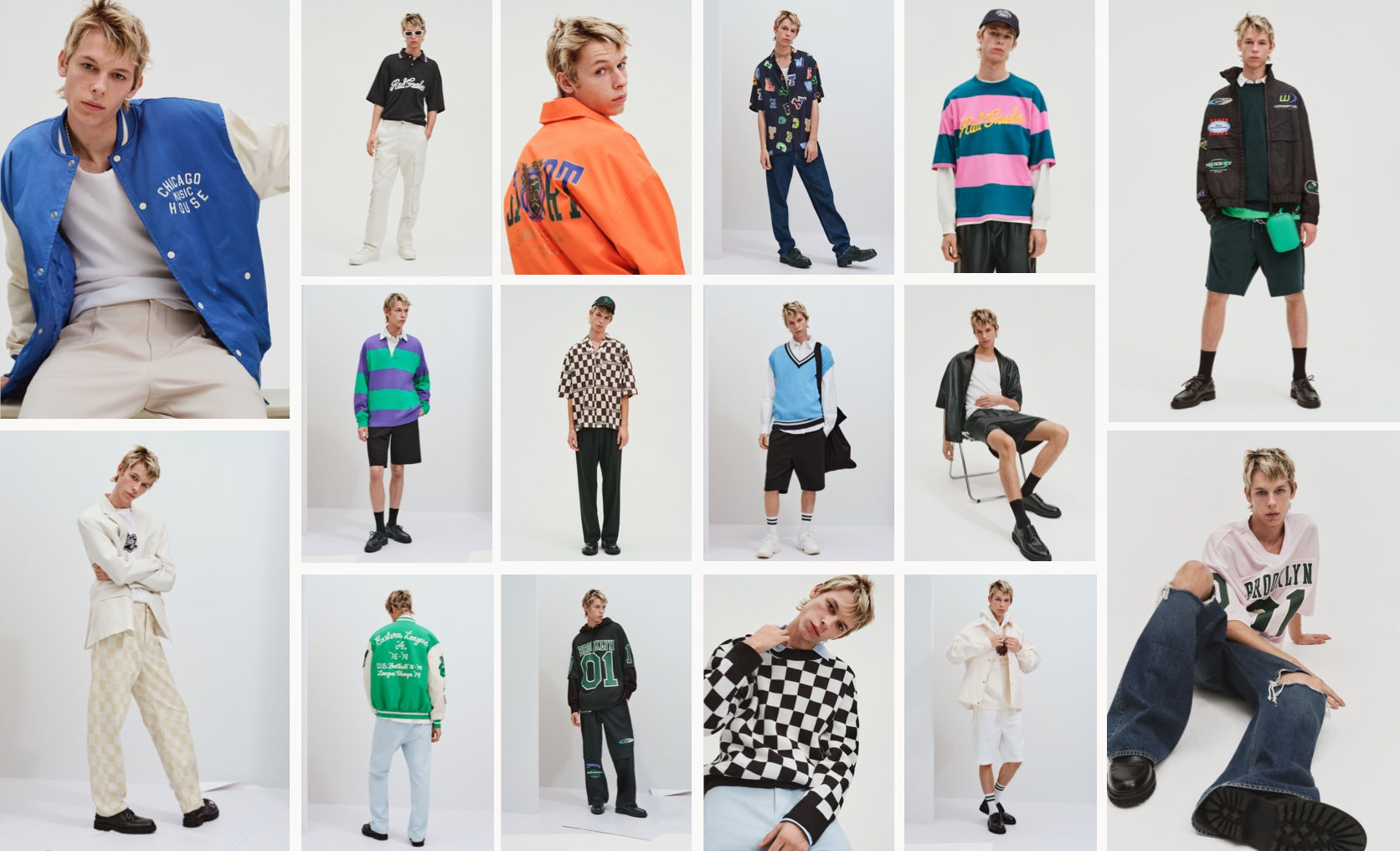

The layout of your lookbook should be adapted to its intended distribution mode. The printed digital version does not make a good hard copy. Plan on making the necessary adjustments and test prints. Besides aesthetic aspects, reflect on the user experience. The lookbook should remain a high-quality fashion catalog, no matter the format.
Prepare for your lookbook photography shoot
Choose your design software
Choosing your design software at this stage might seem counterintuitive. Yet, it can save you so much time later on. There are several factors to be taken into consideration:
- Professional solutions, such as Adobe Suite, are quite expensive for an occasional user.
- If you can not afford to hire a professional graphic designer, consider trying shareware and learning from support forums.
- Try online lookbook creators, lookbook templates, and apps such as Canva.
- Depending on the intended use of the images, select a sufficient resolution - around 300 dpi in PDF for Press quality prints and 72 dpi in PDF for publishing online.
Reflect on your brand's identity
What are the core values and ideas behind your brand? Choose a few keywords you want the client to associate with your products. These should become a common theme for the lookbook you are working on and future projects.
To remain coherent, a company focused on transparency and sustainability will likely choose a digital lookbook over a hard copy and use recyclable materials for its prints and packaging. A label selling casual streetwear and targeting an audience under 25 is likelier to choose decontracted candid snapshots in an urban setting than a brand targeting Gen X. Conversely, a brand specializing in high-end fashion accessories will seek to convey a sense of luxury through its communication style and might invest in a hard copy.
Defining what kind of first impression you want to make on potential customers is crucial. A good lookbook should showcase the designer's latest collection and present the brand. Make sure the choices you make resonate with your target group. Brand consistency is a way to earn customers' trust and loyalty long-term, so how you define it early on can determine your future position and relationships.
Create a storyboard
As you can see, designing a stunning and effective lookbook takes a fair amount of planning. Once you've defined the buyer's persona and your marketing goals, it is time to create a lookbook storyboard.
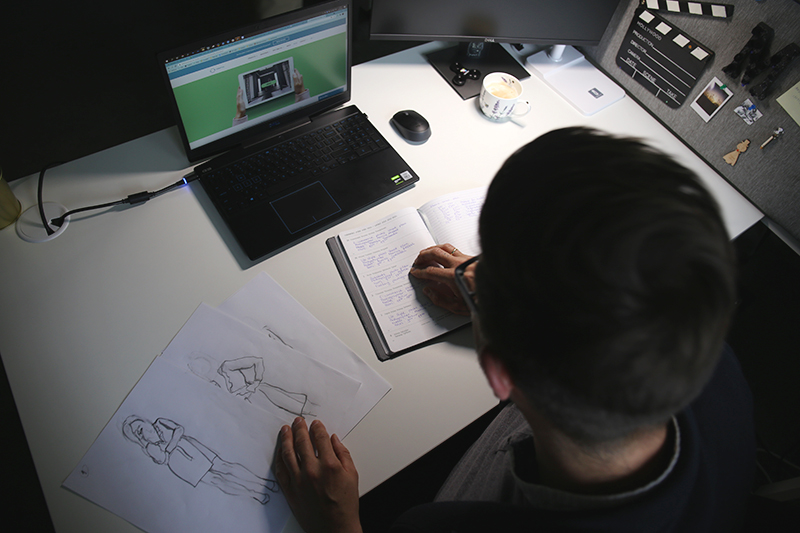
Although storyboards were initially intended to pre-visualize a motion picture, an animation, or an interactive sequence, their use extends to planning and organizing editorial content and photoshoots. Sketching your lookbook's subsequent photos and design elements will enable you to reflect on its composition. Printing the storyboard grid is a common practice in the photography business. Remember that achieving a specific result might require extra preparation and research. Reflect on the lighting, accessories, focal length, and photography equipment needed to turn your ideas into reality! A storyboard is also a precious communication tool for sharing design elements and ideas with the photographer, models, and the rest of your team.
Step two: Realization
Choose and prepare the location
The location choice should reflect the vibe of the designer's collection, the brand's identity and resonate with the potential customer's persona. At the same time, it firmly depends on your budget. The expenditure will vary for a shoot in a professional studio, on a location, inside, or in nature. Setting the shoot in a remote exotic location generates obvious additional travel costs. Depending on your final choice, please remember that some places require applying for a permit well in advance, extra paperwork, or fees. All of these may quickly add up!
In-house or outsourcing - what’s better?
Will you handle the project in-house or outsource it, at least partially? Hiring a professional photographer and a graphic designer for an occasional photo shoot will quickly pay off, given the software license cost and the time invested in learning. An external photography business will also have access to professional photography gear and studio solutions. For a lookbook photoshoot, choose a high resolution camera, such as Canon EOS R5, and a long-focus lens!
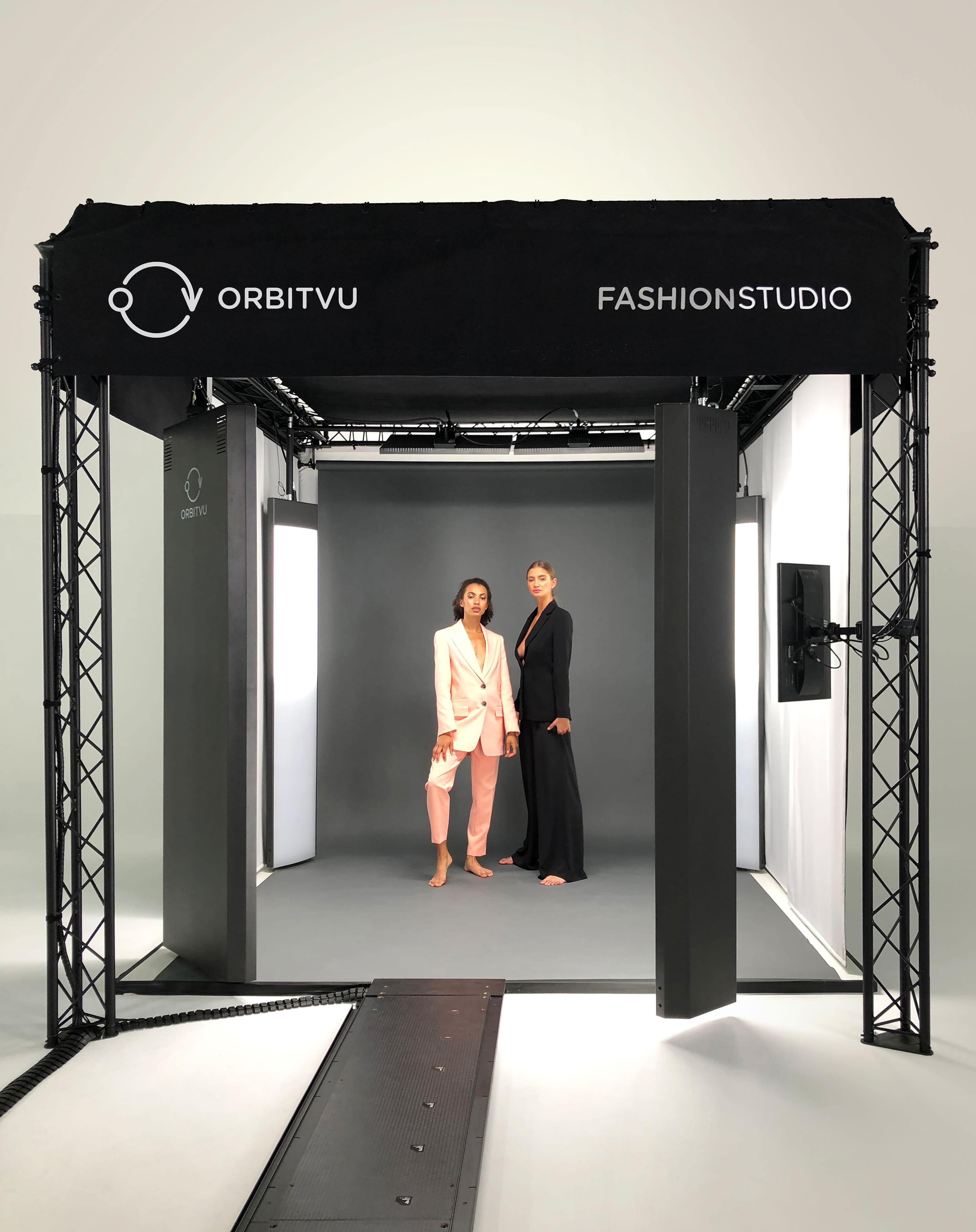
Write attractive product descriptions
The images in your fashion lookbook should be completed with compelling descriptions. Avoid wordy details and focus on your communication style. Texts should be brief, but it is your chance to intrigue the potential customer and grasp their attention.
Use smart SEO
Yet, for a stunning digital lookbook, compelling copywriting is not enough. Instead, use smart SEO to generate organic traffic to your online store. Using the right keywords and links will enable potential buyers to find your products through search engines.
Consider hiring extra staff
As mentioned before, hiring a professional photographer with experience in fashion and lookbook photography is worth the investment! However, if only it fits your budget, consider recruiting extra staff. If you are working on a digital lookbook, think of hiring someone to shoot backstage videos and snaps! These can make up for great social media content, especially Instagram Stories.
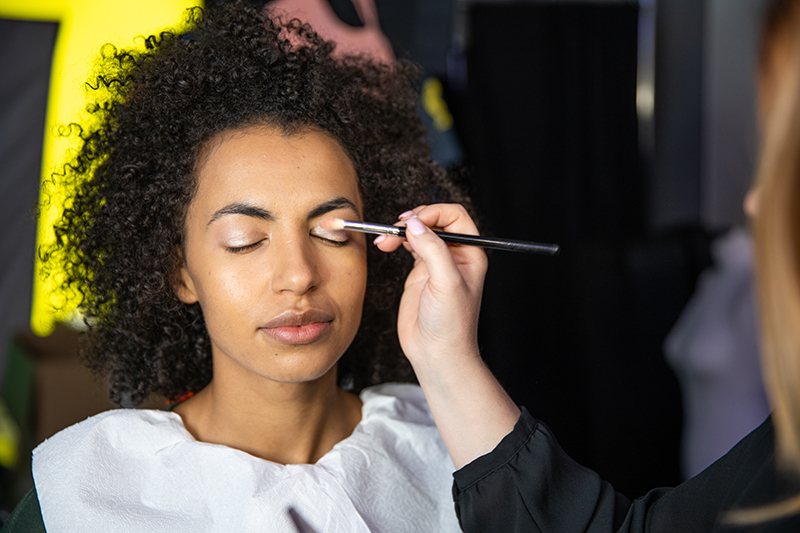
No one knows your brand and its employees, yet an outsider might bring fresh air and a different perspective! Plus, there is only so much one can learn! If you can afford it, save yourself the hustle and entrust professionals with tasks outside your domain of expertise. The preparation of products, professional models, and the shoot location can be easily outsourced to a support team.
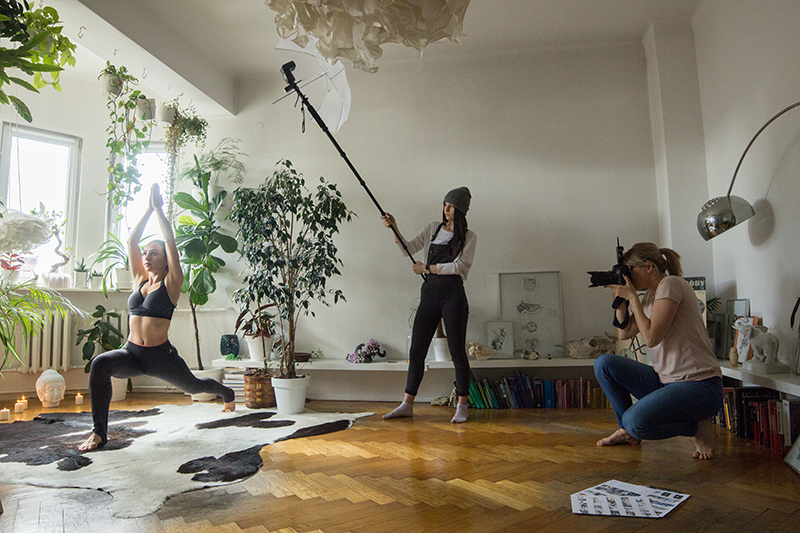
Post-production
Who will take care of the post-production? Are you hiring a graphic designer? There is no written rule about how much post-processing exactly a photo needs. The adjustments should only enhance the impression you want to make on the viewer. So, the post-production process is strictly linked to the goals set while planning your own lookbook.
We have laid out the basic recommendations for post-processing photos in our article about jewelry photography.
Remember that a huge part of photo editing can be prevented during the shoot. Take your time and pay attention to all the details. Be focused and meticulous about your shots. Watch out for dust, light reflexes, and clothing folds.
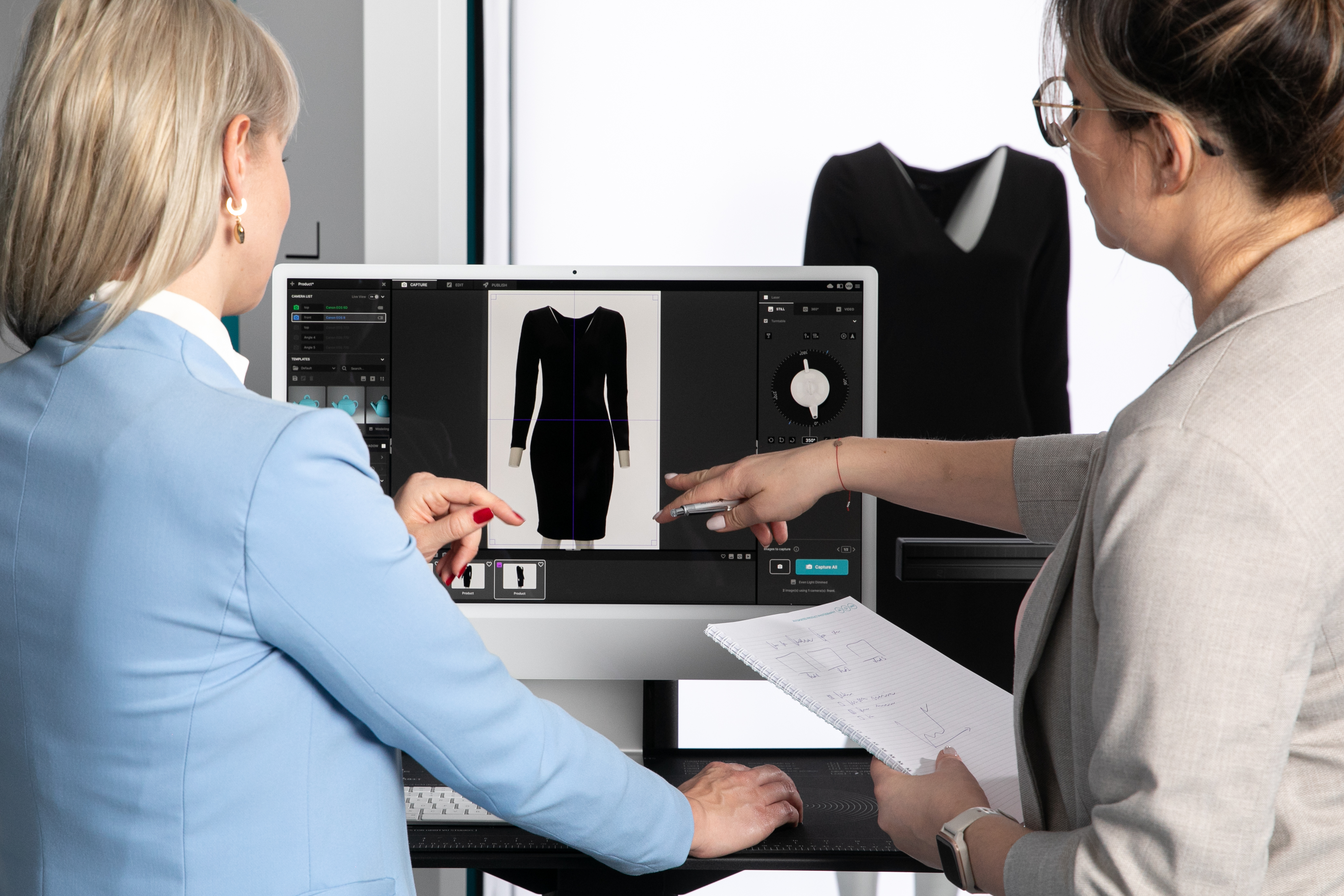
The main purpose of creating a fashion lookbook is to showcase the designer's latest collection through stunning photography. Therefore, the pictures should be a faithful representation of your products. Try to find the sweet spot between enhancing the esthetical value of your photos and keeping them informative for the potential customer. Too many adjustments can be misleading, resulting in increased product returns and customer deception.
Step three: Distribution - Share the finished product and boost sales!
Traditional print
A hard copy is a way to go if you organize events, pop-ups, or mailing campaigns! As mentioned before, consider adapting the layout accordingly, choose a suitable lookbook template, and focus on telling a story or illustrating a theme.
Below you can see the example of Zara Origins digital lookbook in which the photos are sorted by color. The transition between the shots is fluid and intuitive for the viewer.

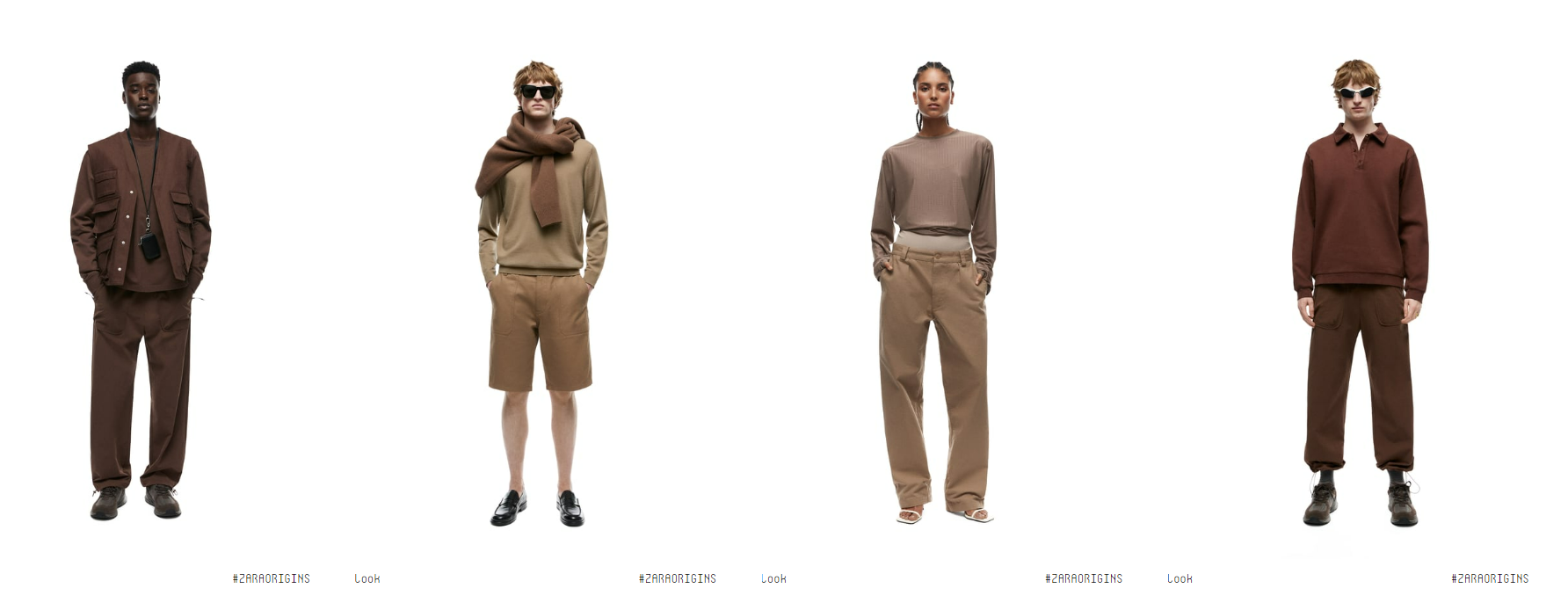

The alluring cover page is the key to success. Choose an eye-catching cover photo to attract the reader's attention and encourage them to review your lookbook.
However, the content is as important as the form! Be mindful of the texture and grammage of the paper. Test prints to see whether the ink matches your expectations. Adjust the thickness. The lookbook should remain handy. If you add more pages, change the format - think of the reader's convenience!
Remember that the quality of your printed catalogs will heavily impact the customer's perception of the brand. Browsing through your lookbook should be both a visual and sensory pleasure. Perfecting the details, such as paper quality or format, can help you create a sense of luxury. Think of your project as a high quality fashion catalog!
Postcards
Select a few representative photos from your digital lookbook to be printed as postcards and published on social media. On the other side of the postcard, write down a "Thank You" note and a unique discount code. These can then be slid into order packages, adding a personal touch and encouraging the customer to return to your online store! This way, the customer will associate the image with your collection.
Digital format
Digital lookbook is the most flexible and polyvalent format. Try to create an immersive and interactive experience for your customers. Ensure all the elements are clickable, check if the links work properly, and the online lookbook charges on mobile and desktop with no glitches.
QR code
Think of using a QR code to share your digital lookbook easier. It is cost-effective, environmentally friendly, and in sync with current trends!
Final Thoughts
Creating a lookbook can be quite time-consuming, yet, the effort should quickly pay off! Think of it as an investment - the videos and high-quality photos can be used and reused in many ways!
|
Articles you may also like
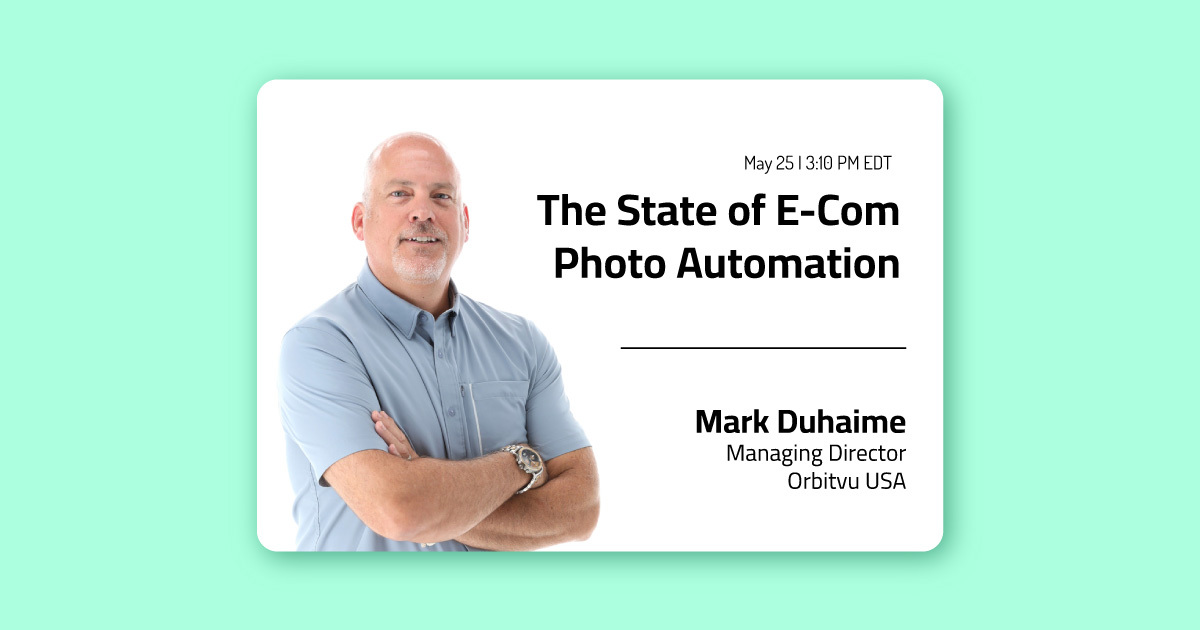
We are excited to announce that Mark Duhaime from the ORBITVU USA team will be presenting “The State of E-Com Photo Automatio...
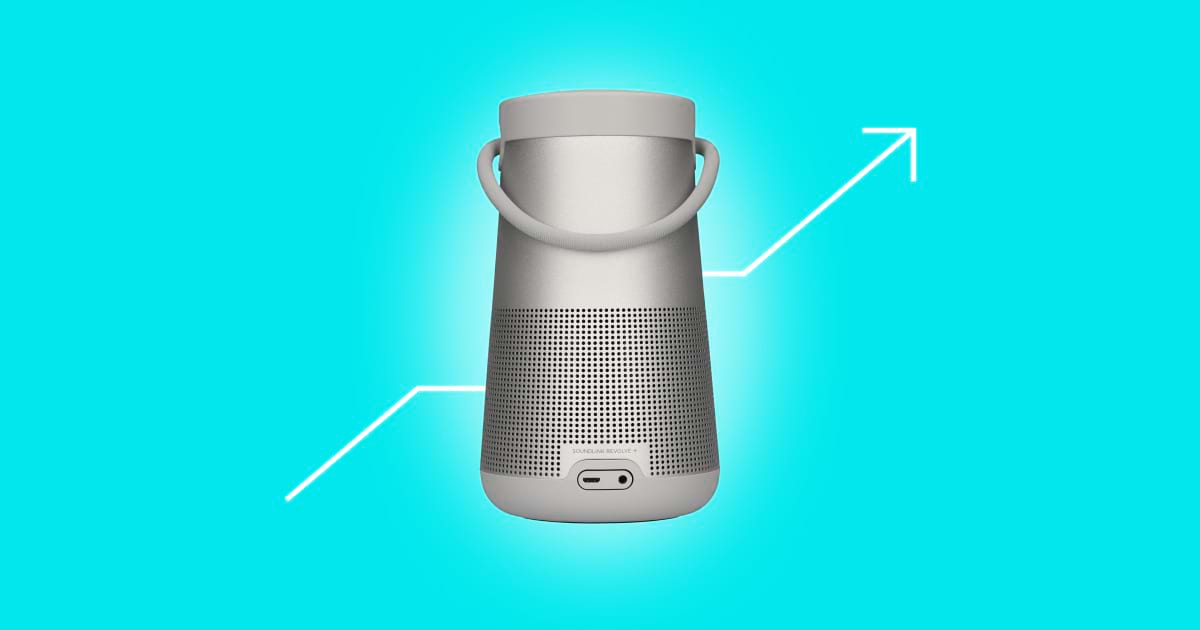
The e-commerce industry is thriving. There’s no doubt about it. In fact, e-commerce is expected to account for 24% of global ...
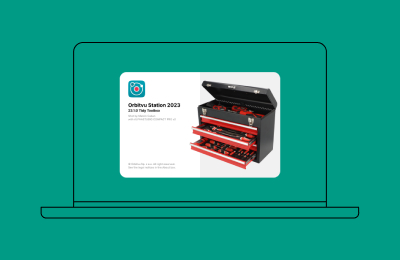
Spring has arrived, and so has our latest release of Orbitvu Station 23.1.0, “Tidy Toolbox”. There are fresh features, a bunc...






